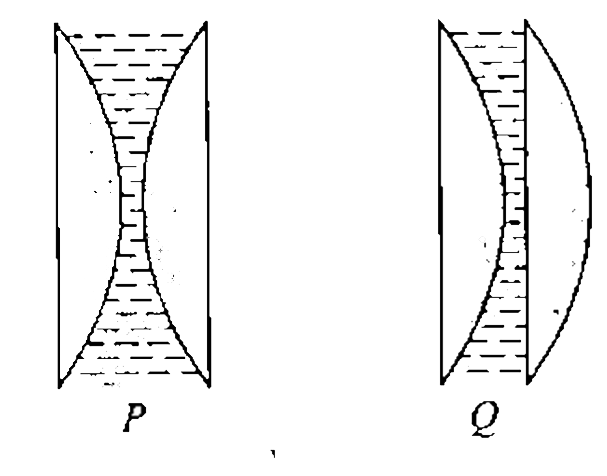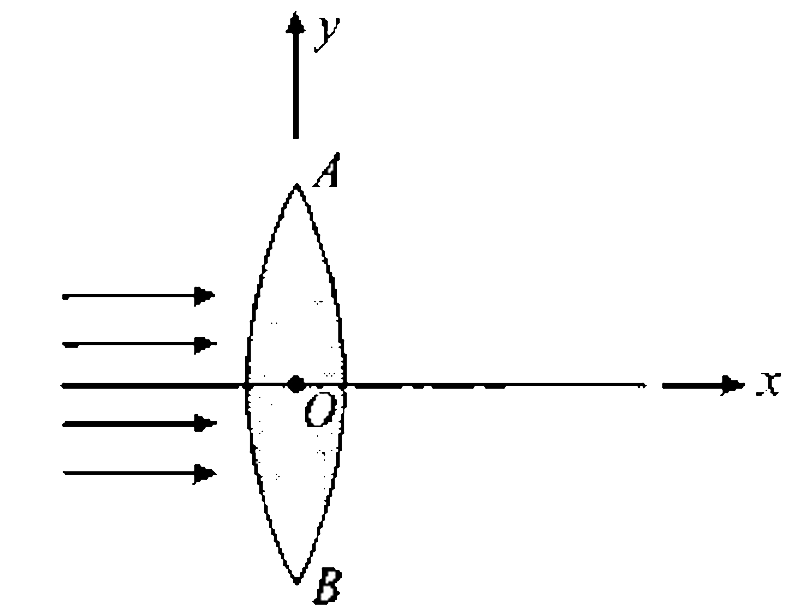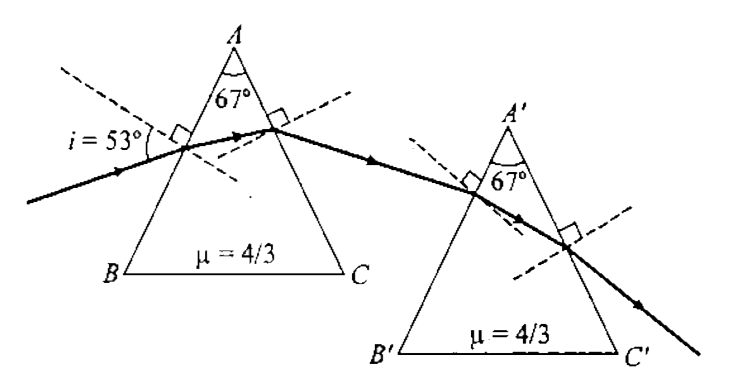Conceptual MCQs Single Option Correct from GK PUBLICATIONS PHYSICS Chapter 6 GEOMETRICAL OPTICS for Class 12
| Class 12 | PHYSICS |
| Chapter | GEOMETRICAL OPTICS |
| GK PUBLICATIONS PHYSICS | Conceptual MCQs Single Option Correct |
| Medium | English |
| Academic Year | 2023-2024 |
Question 1
A beaker containing liquid is placed on a table, underneath a microscope which can be moved along a vertical scale. The microscope is focused, through the liquid onto a mark on the table when the reading on the scale is a. It is next focused on the upper surface of the liquid and the reading is b. More liquid is added and the observations are repeated, the corresponding readings are c and d. The refractive index of the liquid isView SolutionQuestion 3
Inside a solid glass sphere of radius R, a point source of light lies at a distance x(x<R) from centre of the sphere. The solid is surrounded by air of refractive index 1. The maximum angle of incidence for rays incident on the spherical glass air interface directly from the point soure is: View SolutionQuestion 4
Two plane mirrors of length L are separated by distance L and a man M2 is standing at distance L from the connecting line of mirrors as shown in figure. A man M1 , is walking in a straight line at distance 2 L parallel to mirrors at speed u,then man at O will be able to see image of M1 ,for total time:
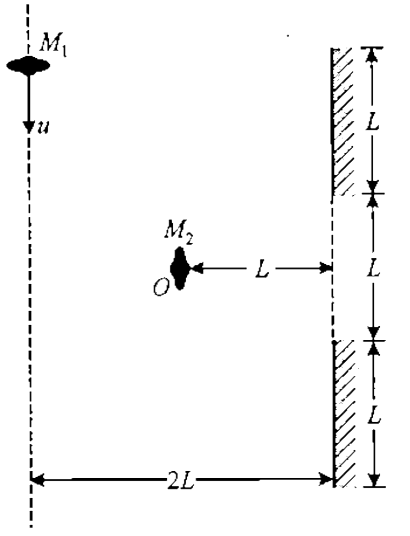 View Solution
View SolutionQuestion 8
In the diagram shown, light is incident on the interface between media 1 (refractive index n1) and 2 (refractive index n2) at angle slightly greater than the critical angle, and is totally reflected. The light is then also totally reflected at the interface between media 1 and 3 (refractive index n3), after which it travels in a direction opposite to its initial direction, The media must have a refractive indices such that.
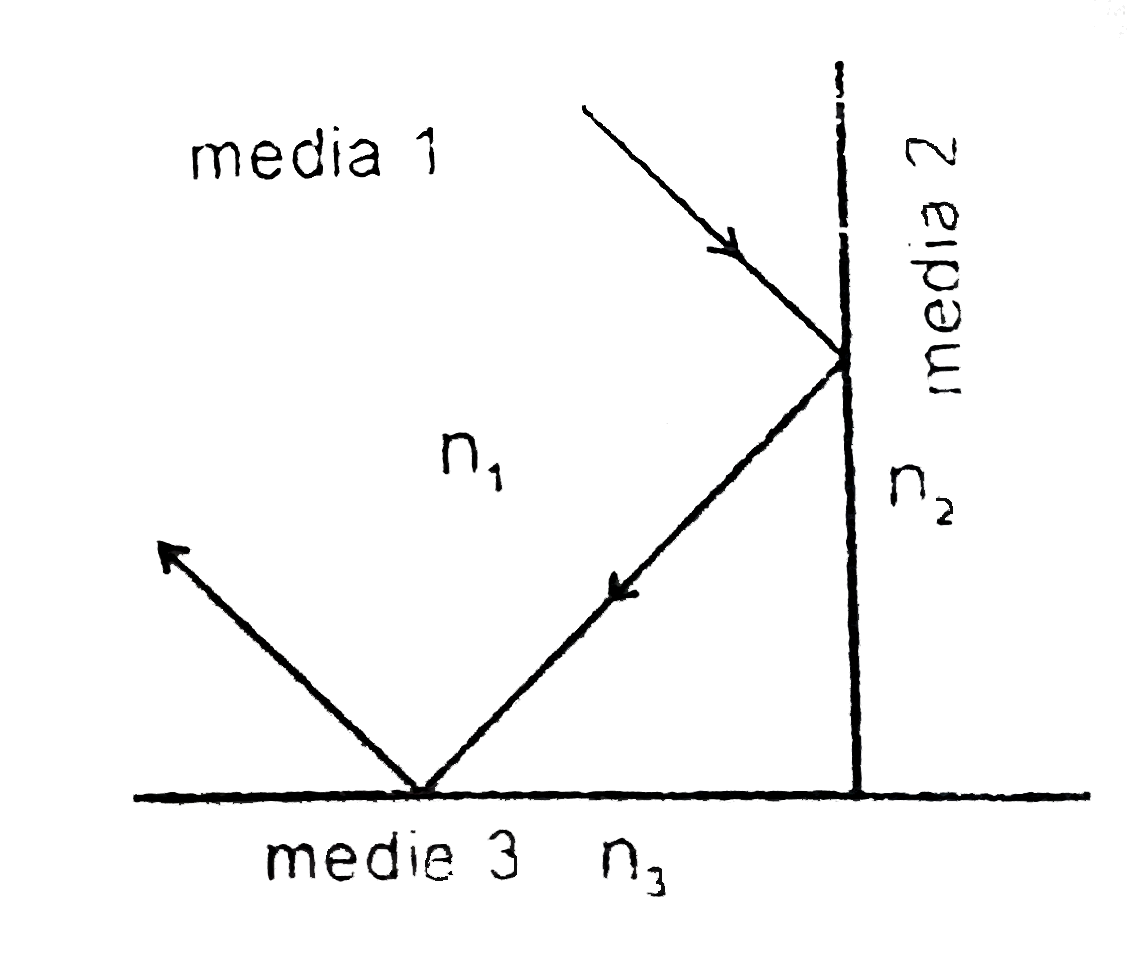 .View Solution
.View SolutionQuestion 10
An infinitely long reactangular strip is placed on principal axis of a concave mirror as shown in figure. One end of the strip coincides with centre of curvature as shown. The hright of rectangular strip is very small in comparison to focal length of the mirror. Then the shape of image of strip formed by concave mirror is
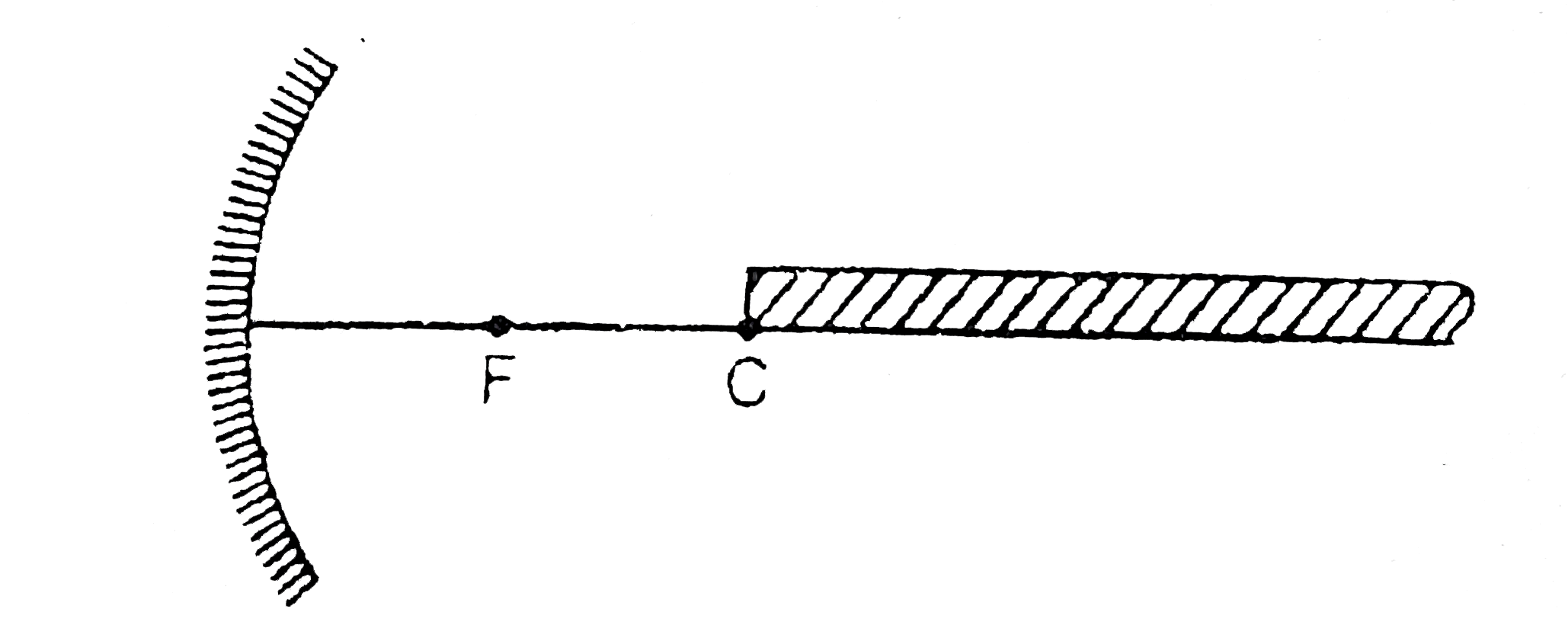 .View Solution
.View SolutionQuestion 16
In the figure shown, blocks P and Q are in contact but do not stick to each other. The lower face of P behaves as a plane mirror. The springs are in their natural lengths. The system is released from rest. Then the distance between P and Q when Q is at the lowest point first time will be
 View Solution
View SolutionQuestion 17
A point object is moving along principal axis of concave mirror with uniform velocity towards pole. Initially the object is at infinite distance from pole right side of the mirror as shown. Before the object collides with mirror, the number of times a which the distance between object and its image is 40cm are.
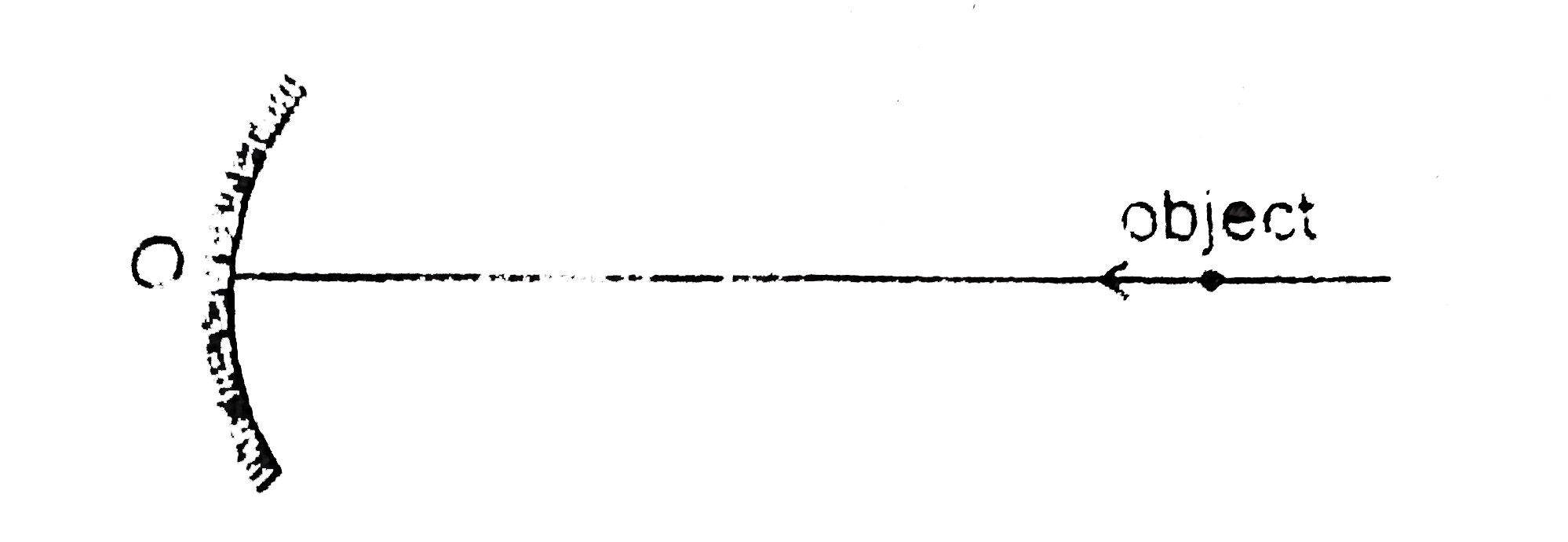 .View Solution
.View SolutionQuestion 20
A parallel beam of light passes parallel to the principal axis and falls on one face of a thin convex lens offocal length f and after two internal reflections from the second face forms a real image. The distance of image from lens if the reflactive index of material of lens is 1.5 :View SolutionQuestion 22
A prism of angle A and refractive index 2 is surrounded by medium of refractive index √3 . A ray is incident on side PQ at an angle of incidence i(0≤i≤90∘) as shown in the figure-. The refracted ray is then incident on side PR of prism. The minimum angle A of prism for which ray incident on side PQ does not emerge out of prism from side PR (for any value of i) is:
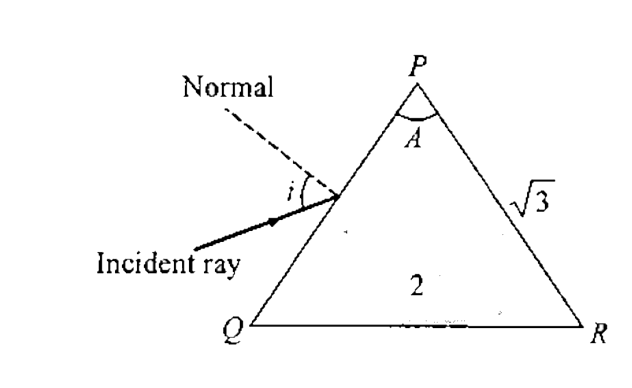 View Solution
View SolutionQuestion 23
Two plane mirrors are joined together as shown. Two point objects A and B are placed symmetrically such that OA=OB=d.[AOB is a straight line]
(a) If the images of A and B coincide find θ (call it θ0).
(b) Keeping the position of objects unchanged the angle between the two mirrors is increased to θ=43θ0. Now find the distance between the images of A and B.
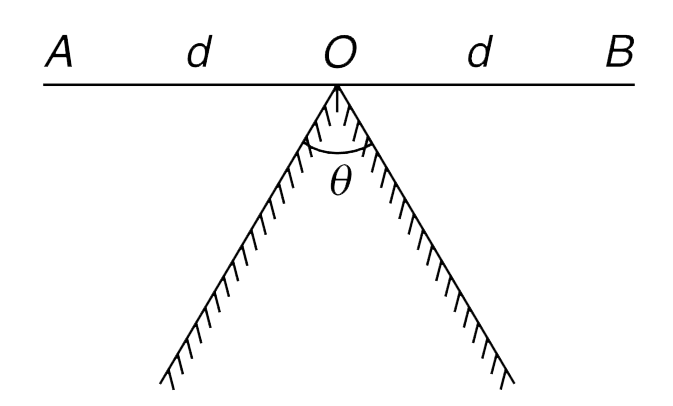 View Solution
View SolutionQuestion 26
A converging lens of focal length 20cmand diameter5cmis cut along the lineAB.The part of the lens shown shaded in the diagram is now used to form an image of a point Pplaced 30cmaway from it on the lineXY.Which id perpendicualr to the plane of the lens.The image ofPwill be formed.
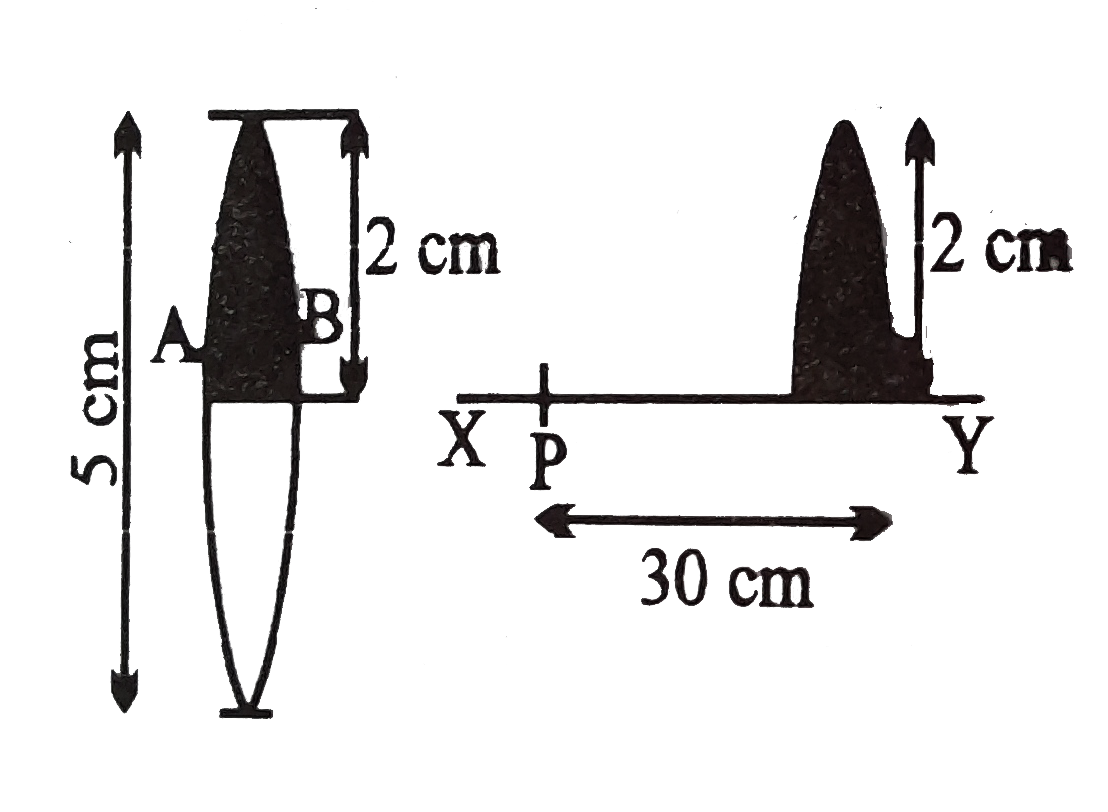 View Solution
View SolutionQuestion 30
Two particles A & B of mass m1 and m2 respectively start moving from O with speeds v1, and v2. A moves towards the plane mirror and B moves parallel to mirror horizontally. The mirror is in y-z plane. The absolute-speed of image of centre of mass of the system (image of A + image of B)is:
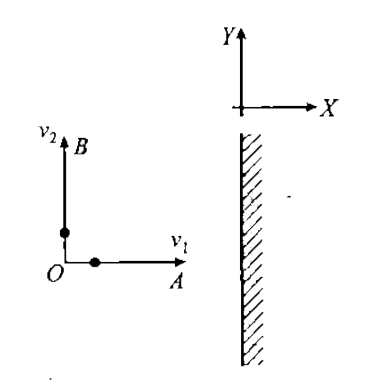 View Solution
View SolutionQuestion 31
A mango tree is at the bank of a river and one of the branch of tree extends over the river. A tortoise lives in the river. A mango falls just ono the tortoise. The acceleration of the mango falling from tree as it appears to the tortoise is (refractive index of water is 4/3 and the tortoise is stationary)View SolutionQuestion 32
A plane mirror having a mass m is tied to the free end of a mass less spring of spring constant k. The other end of the spring is attached to a wall. The spring with the mirror held vertically to the floor on which it can slide smoothly. When the spring is at its natural length, the mirror is found to be moving at a speed of v cm/s. The separation between the images of a man standing before the mirror, when the mirror is in its extreme positions:
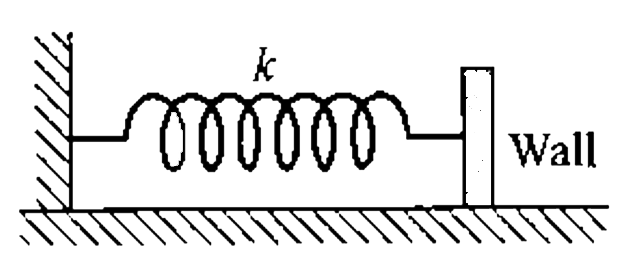 View Solution
View SolutionQuestion 33
An observer can see through a pin-hole the top end of a thin rod of height h, placed as shown in the figure. The beaker height is 3h and its radius h. When the beaker is filled with a liquid up to a height 2h, he can see the lower end of the rod. Then the refractive index of the liquid is
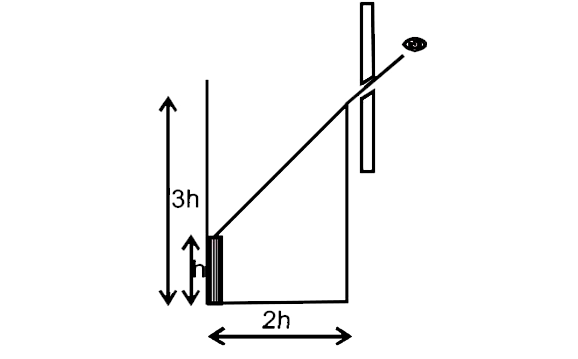 View Solution
View SolutionQuestion 34
A ray of light is incident on the left vertical face of glass cube of refractive index n2, as shown in figure. The plane of incidence is the plane of the page, and the cube is surrounded by liquid (refractive index=n1). What is the largest angle of incidence θ1 for which total internal reflection occurs at the top surfaces? View Solution
View SolutionQuestion 37
A slab of high quality flat glass, with parallel faces, is placed in the path of a parallel light beam before it is focussed to a spot by a lens. The glass is rotated slightly back and forth from the dotted centre about an axis coming out ofthe page, as shown in the diagram. According to ray optics the effect on the focussed spot is:
 View Solution
View SolutionQuestion 38
A parallel glass slab of refractive index √3 is placed in contact with an equilateral prism of refractive index √2. A ray is incident on left surface of slab as shown. The slab and prism combination is surrounded by air. The magnitude of minimum possible deviation of this ray by slab-prism combination is:
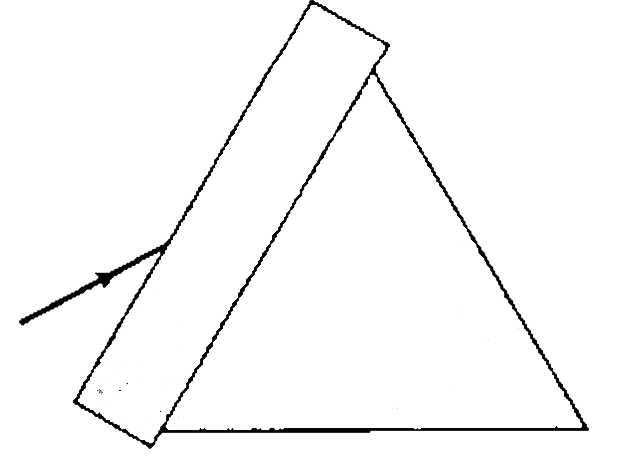 View Solution
View SolutionQuestion 42
A light ray gets reflected from a pair of mutually ⊥ mirrors, not necessarily along axes. The intersection point of mirrors is at origin. The incident light ray is along y=x+2 . If the light ray strikes both mirrors in succession, then it may get reflected finally along the line:View Solution
All Exercises from GK PUBLICATIONS PHYSICS Class 12 PHYSICS GEOMETRICAL OPTICS
- Advance MCQs with One or More Options Correct
- Conceptual MCQs Single Option Correct
- Discussion Question
- Illustrative Example
- Numerical MCQs Single Options Correct
- Practive Exercise 5.1
- Practive Exercise 5.2
- Practive Exercise 5.3
- Practive Exercise 5.4
- Practive Exercise 5.5
- Practive Exercise 5.6
- Practive Exercise 5.7
- Practive Exercise 5.8
- Practive Exercise 5.9
- Unsolved Numerical Problems

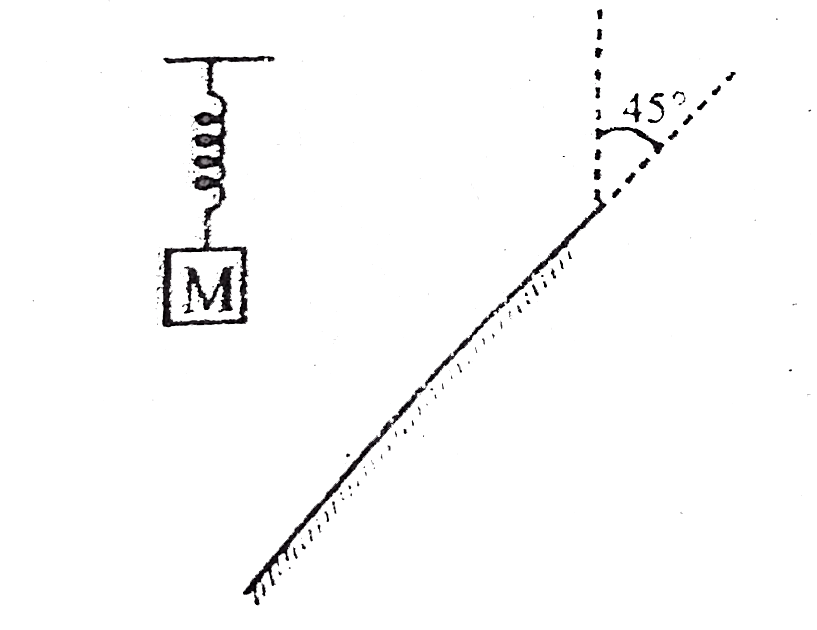
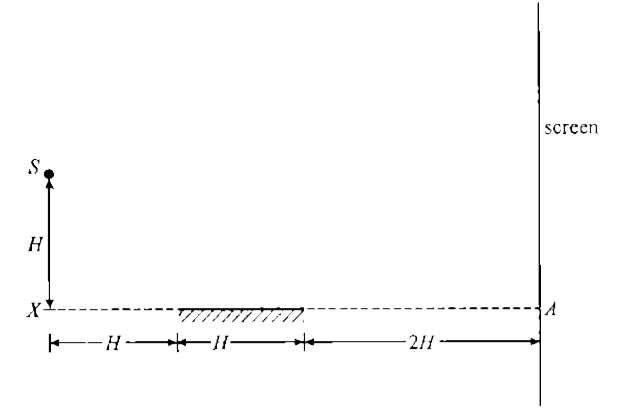
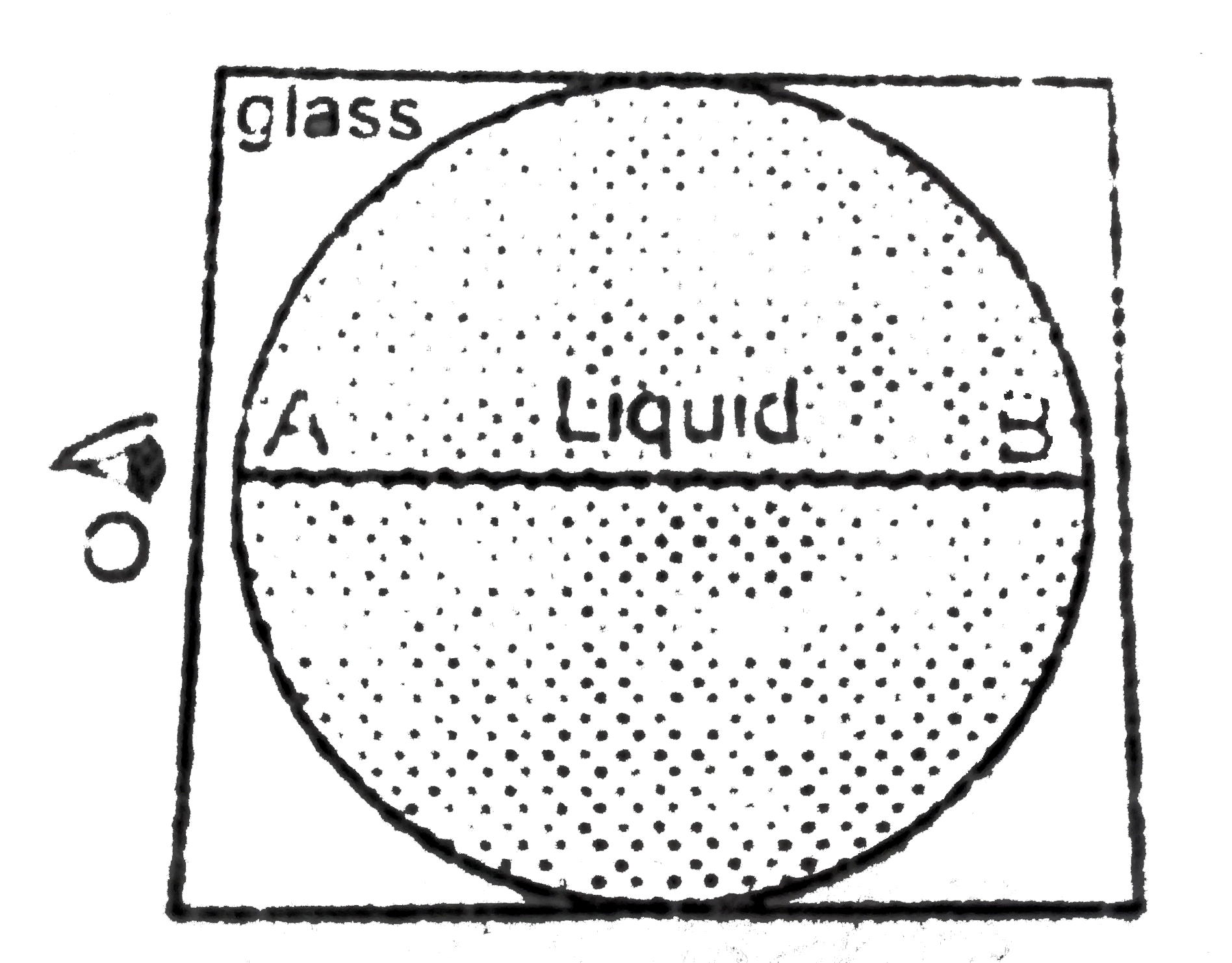 .
.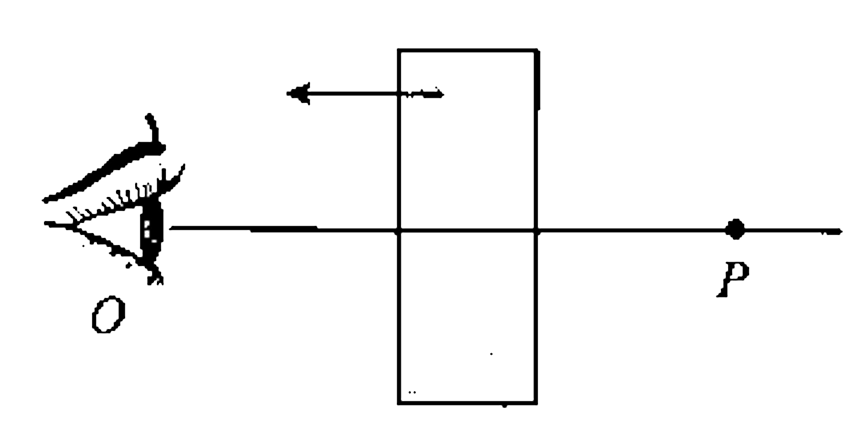
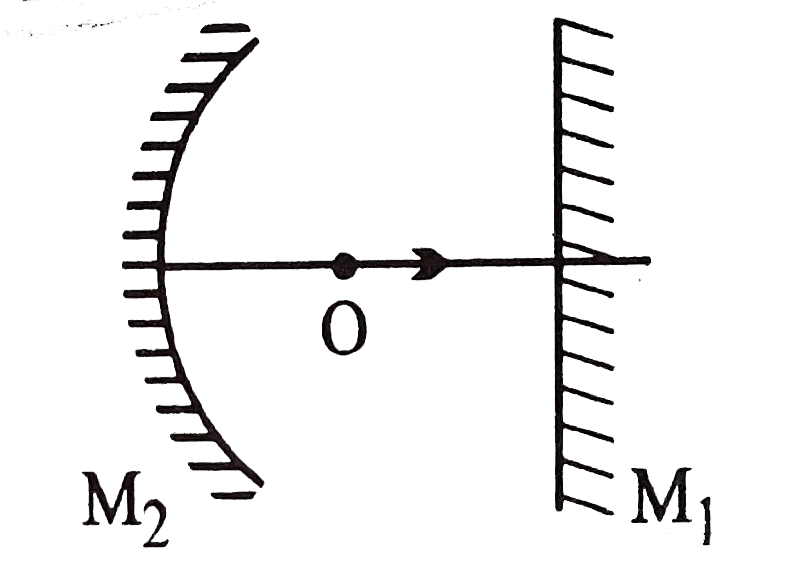

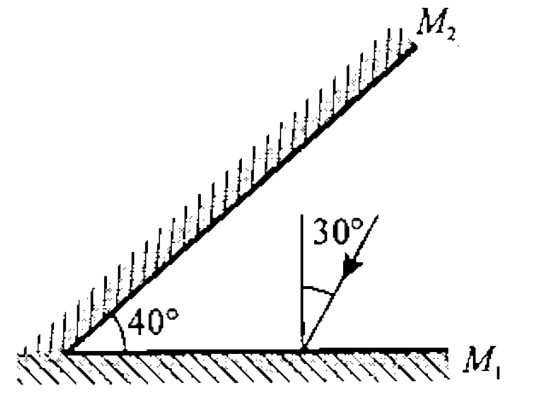
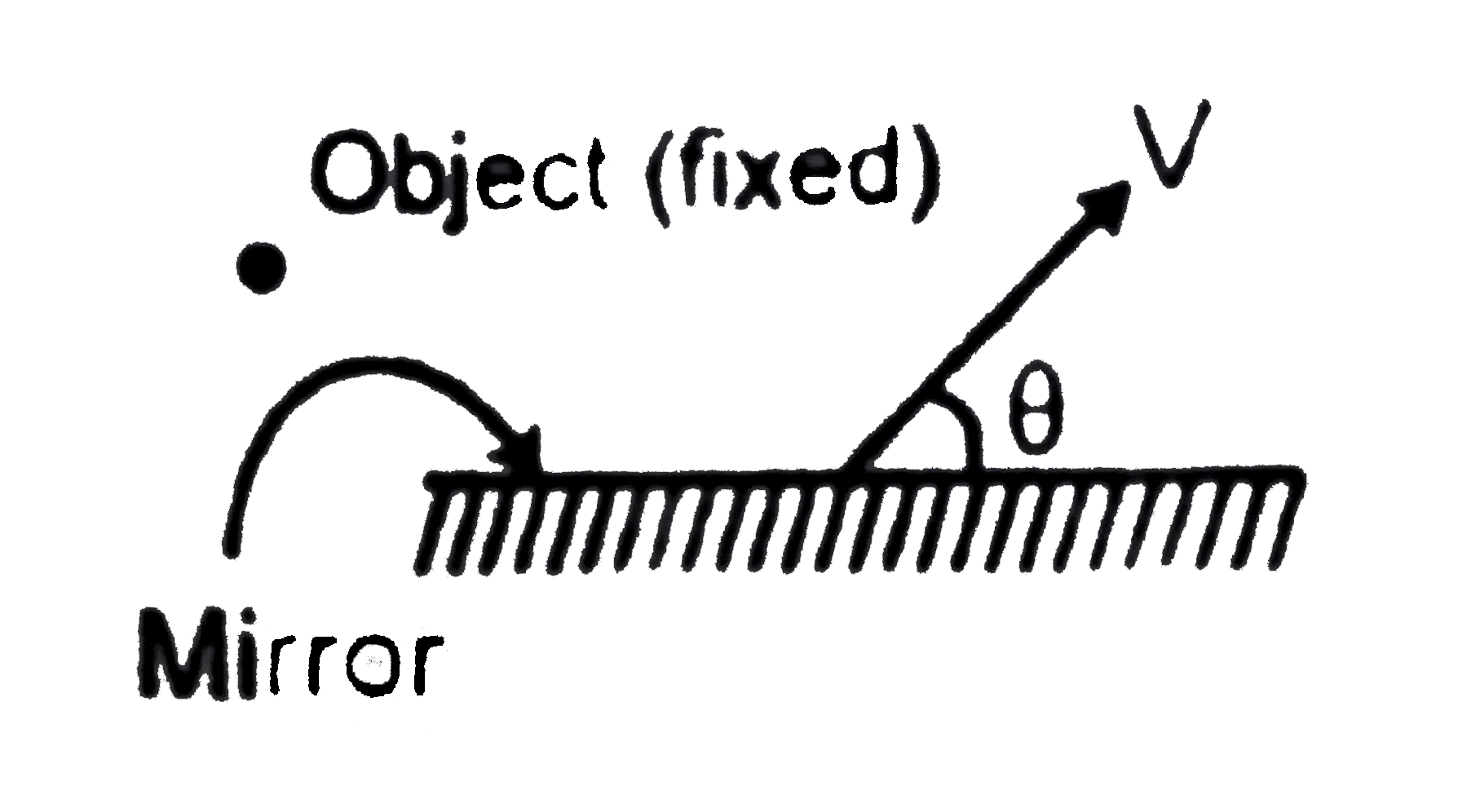 .
.
